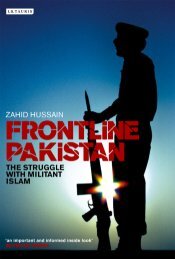Who Owns Pakistan - Yimg
Who Owns Pakistan - Yimg
Who Owns Pakistan - Yimg
You also want an ePaper? Increase the reach of your titles
YUMPU automatically turns print PDFs into web optimized ePapers that Google loves.
Chapter One – <strong>Pakistan</strong>’s Economic Saga<br />
<strong>Pakistan</strong>'s Economic Saga and 22 Families<br />
<strong>Pakistan</strong>'s economic saga, marked today by huge distortions and concentration<br />
of wealth and power in few hands can be studied in three phases beginning with<br />
post-independence period up to the seperation of East <strong>Pakistan</strong> and Z A Bhutto's<br />
nationalization (1947-71), the senior Bhutto era (1971-77), and post Bhutto era<br />
comprising of Zia ul Haq's status quo and two Nawaz Sharif governments,<br />
preceded and followed by two interregnnums of Benazir Bhutto.<br />
In the first phase, the emphasis of government policies was on increasing the<br />
size of the cake, rather than trying to distribute it equitably among the different<br />
segments of the <strong>Pakistan</strong>. "Accumulate, accumulate, thy is Prophet, thy is<br />
Moses" was given currency and <strong>Pakistan</strong> was portrayed as a country on way to<br />
become an Asian Tiger. Bank credits and industrial licenses were monopolised<br />
by a privileged commercial class and industries set up by government were<br />
divested in favour of big industrialists.<br />
The over-emphasis on GNP during Field Marshal Ayub Khan's Decade of<br />
Development (1958-68) divided the society into privileged and under privileged<br />
and it was the iniquitous economic and regional development of this era which<br />
led to the explosive situation of the 1970's culminating in the severance of<br />
<strong>Pakistan</strong> and induction into power os a socialist government of Z A Bhutto.<br />
The second phase, (1971-77) under <strong>Pakistan</strong> People's Party was the era of<br />
dismantling monopolies, nationalization, hitting at the power base of industrial<br />
barons and clipping their wings while 11 years rule of Zia ul Haq that followed<br />
was a period of status quo for the economy. It came to an end in Aug 1988 with<br />
the C-130 crash that killied Zia.<br />
During her first term, Benazir Bhutto took a small step towards privatization by<br />
setting up a National Disinvestments Authority which identified 14 units for<br />
privatization. Otherwise 1988-90 under Benazir was an inconsequential period<br />
for <strong>Pakistan</strong>'s economy because in this period she could not come to grips with<br />
real economic problem and her interest in economy was only marginal.<br />
Nawaz Sharif's three years (1990-93) saw a tactical retreat to the 1970's by<br />
massive concentration of wealth and reincarnation on monopolies, by opening up<br />
state sectors to the private sector and privatization of state owned enterprises to<br />
big industrial groups. Nationalization was replaced by such a grotesque<br />
privatization that world reknown economist Dr. Mahboob ul Haq saw <strong>Pakistan</strong><br />
ending up in Latin American quagmire.<br />
8













